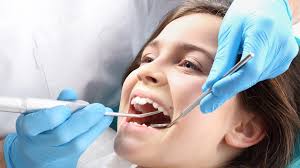Dental crowns excel in multiple roles. Their durability helps to restore damaging teeth. Additionally, they are excellent at providing strength, protecting the tooth structure, and improving the aesthetics of your smile. Unfortunately, no dental restoration can truly be an end-all-be-all.
While proper care for dental crowns can genuinely extend their lifespan, they eventually do need to be placed to ensure continued functionality. This is why experts in dental crowns in Honolulu HI recommend replacements. Usually, this is recommended after specific signs of wear or damage, such as…
Persistent Tooth Sensitivity
While some sensitivity is normal after a crown procedure, ongoing or increasing sensitivity, especially to hot or cold temperatures, could indicate a problem. This may happen if the crown is no longer fitting properly, exposing the underlying tooth or nerve endings. Dental experts suggest that if you notice consistent sensitivity around a crowned tooth, it’s essential to schedule a dental checkup.
Visible Cracks or Chips
Dental crowns are made from durable materials like porcelain, but they can still develop cracks or chips over time, especially if exposed to significant pressure. A cracked or chipped crown not only compromises the appearance of your smile but also weakens the protection the crown provides to the tooth underneath. If you notice visible damage to your crown, it’s important to seek advice from your dentist. Even minor cracks can worsen with time, leading to more significant damage or even exposing the tooth to infection.
Wobbling or Loose Crown
A dental crown should fit securely over your tooth without moving. If you feel that your crown is loose or wobbly, it’s a clear sign that it may need to be replaced. Loose crowns can occur for various reasons, including wear on the bonding material that holds the crown in place or changes in the underlying tooth structure.
Darkening at the Gumline
Over time, you may notice darkening or discoloration at the gumline where your crown meets the tooth. This can be a sign of decay or damage underneath the crown, indicating that the crown may need to be replaced. Sometimes, this darkening is caused by the metal base of a porcelain-fused-to-metal crown becoming visible as the gum recedes.
Wear and Tear from Chewing
Daily wear and tear from chewing, grinding, or clenching your teeth can eventually cause a dental crown to degrade. Even though crowns are designed to withstand normal chewing forces, excessive pressure from grinding or bruxism can shorten their lifespan. Over time, you may notice that your crown has become worn down, leading to reduced protection for the underlying tooth.
Discomfort While Biting Down
If you experience discomfort or pain when biting down on a crowned tooth, it may indicate that the crown no longer fits correctly. This could be due to changes in your bite, shifting of the teeth, or wear on the crown itself. An improperly fitting crown can place additional pressure on the surrounding teeth and gums, leading to discomfort.
Gum Recession Around the Crown
Gum recession can occur naturally as you age or due to gum disease. When the gums recede, they expose more of the tooth beneath the crown, which can lead to sensitivity, decay, and aesthetic concerns. If you notice that the gums around your crowned tooth are pulling back, it may be time to consider replacing the crown.
It is absolutely essential to not ignore any signs of damage on your dental crowns. Remember, they have been placed to specifically negate any damage and harm to the tooth. If the crown itself is damaged, your tooth is at risk! As such, at the first sign of any damage, it’s best to reach out to your dental expert and get replacements immediately!











